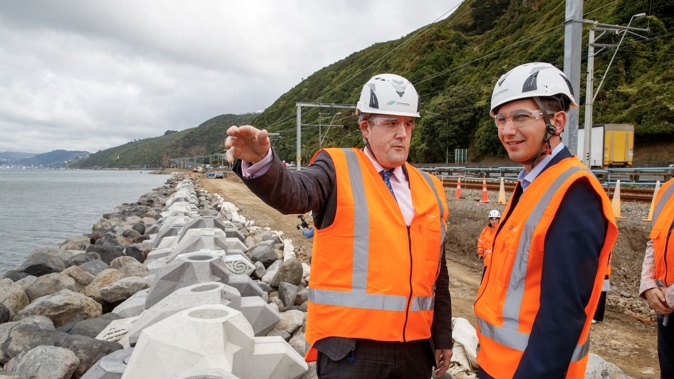
The Government is setting up an agency to identify infrastructure priorities for the next three decades.
The National Infrastructure Agency will be established in December this year by repurposing the existing Crown Infrastructure Partners (CIP), and will:
- Act as the Government’s shopfront to facilitate private sector investment in infrastructure,
- Partner with agencies, and in some cases, local government, on projects involving private finance,
- Administer central government infrastructure funds, and
- Continue the work that CIP is already doing.
Infrastructure Minister Chris Bishop said National had campaigned on an infrastructure plan.
“Right now, our infrastructure system is not performing as well as it needs to be. We rank in the bottom 10% of high-income countries for the quality and efficiency of our infrastructure investments.”
There were constant cost overruns and delays on projects, instances of unreliable and unsafe infrastructure, construction companies and workers who don’t want to stay here, and a $100 billion infrastructure gap.
The new agency is expected to have around 60 staff in 2025, with an annual budget for base operating expenditure of around $26 million – including CIP’s existing operations. This is a 50% increase in staff, and a 44% increase in base operating funding.
“I want the private sector to invest here, because they are confident in the pipeline and are enabled to get on with it by an efficient and fair consenting system,” Bishop said in speech notes for a Building Nations event held today.
“And I want the public to enjoy infrastructure that is safe, reliable, accessible, and good value for money.
“Establishing the NIA is part of broader work to simplify and reorganise the Crown’s central infrastructure system. The public sector infrastructure system is confusing and contains duplication and inefficiency.”
Cabinet has also agreed to clarify the roles and responsibilities of other parts of the Crown’s infrastructure system by confirming that, from December 1:
- The Infrastructure Commission will retain its role as the Government’s independent strategic advisor on infrastructure matters – focusing on long-term strategy.
- The Treasury will assume the commission’s responsibility for Public-Private Partnership (PPP) policy, and take primary responsibility for supporting the Minister for Infrastructure
- Rau Paenga (Crown Infrastructure Delivery) will be mandated to provide project delivery services to Crown agencies that have low infrastructure delivery capability.
Bishop said the 30-year plan would identify needs over the next three decades, planned investments over the next 10-15 years, and recommendations on priority projects and reforms to fill the gap between what we have now, what we will have soon, and what we’ll need in the future.
“Led by New Zealand’s Infrastructure Commission, the plan will focus on ensuring we make better use of our existing assets, and that any new investments provide value for money. It will build on the work the commission has already done on the New Zealand Infrastructure Strategy.
“In developing the National Infrastructure Plan, the Infrastructure Commission will work across central and local government, along with the private and wider infrastructure sector.”
The plan will consist of four components:
- An Infrastructure Needs Assessment which provides analysis of New Zealand’s long-term needs – and what we can afford – across the next five to 30 years
- A strengthened National Infrastructure Pipeline which will provide a national view of upcoming projects in the next 10 years
The Infrastructure Priorities Programme (IPP) which will involve a structured independent review of unfunded projects and initiatives, and
- Priority reforms, which will improve the way we select, invest in, deliver and maintain our infrastructure.
“The IPP picks up lessons from Australia’s Infrastructure Priority List which has helped them build political consensus on an enduring pipeline of priorities – exactly what we need in New Zealand.”
The IPP website will be open to everyone.
‘The private sector, non-government organisations, local government and communities are all welcome to submit their proposals for infrastructure priorities. The first round of priority proposals will be published in April next year, and the second round in June,” said Bishop.
“To have long-term stability, it’s important that the National Infrastructure Plan has bipartisan buy-in. To this end I have written to the Infrastructure spokespeople of each party represented in Parliament, inviting them to be formally briefed by the Infrastructure Commission on the development of the 30-year National Infrastructure Plan. I intend that these briefings be offered every six months.”
He will also urge Parliament’s Business Committee to hold an annual special debate on the National Infrastructure Plan.
“While this debate won’t change the contents of the plan, because it is independent, it will show areas where parliamentary parties agree, where we don’t, and where there is room to compromise in the best interests of New Zealanders.”
Grant Bradley has been working at the Herald since 1993. He is the Business Herald’s deputy editor and covers aviation and tourism.
Take your Radio, Podcasts and Music with you








